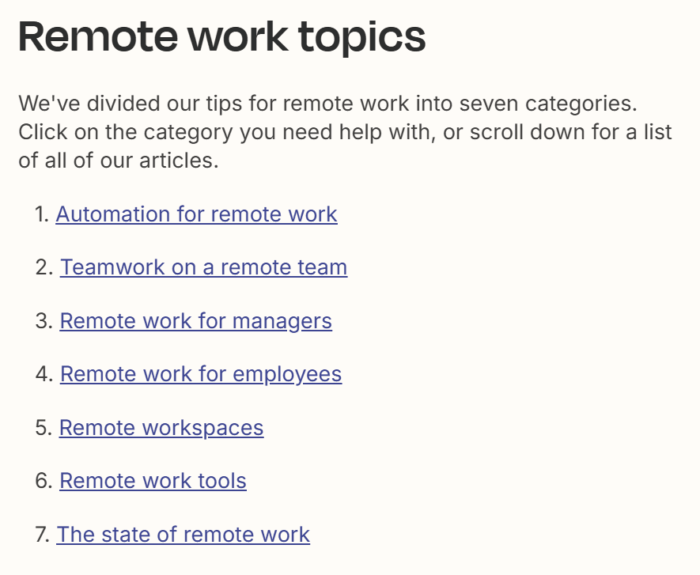Human-Centered SEO: How To Succeed While Others Struggle With AI via @sejournal, @martinibuster
Machines cannot replace skilled marketers who understand the role of human behavior signals that drive rankings. The post Human-Centered SEO: How To Succeed While Others Struggle With AI appeared first on Search Engine Journal.

It’s been suggested that agentic AI will change SEO from managing tools to managing intelligent systems that manage SEO tools, essentially turning an SEO into a worker who rides a lawn mower, with the machine doing all the work. However, that prediction overlooks a critical fact: user behavior remains Google’s most important ranking factor. Those who understand the human-centered approach to SEO will be able to transition to the next phase of search marketing.
Human-Centered SEO vs. Machine-Led Marketing
Many people practice SEO by following a list of standard practices related to keywords, including following the advice of third party optimizer tools. That’s in contrast to some who proceed with the understanding that there’s a certain amount of art to SEO. The reason is because search engines are tuned to rank websites based on user behavior signals.
Standard SEO practices focus on the machine. But many ranking signals, including links. are based on human interactions. Artful SEOs understand that you need to go beyond the machines and influence the underlying human signals that are driving the rankings.
The reason there is an art to SEO is because nobody knows why the search engines rank virtually anything. If you look at the backlinks and see a bunch of links from major news sites, could that be the reason a competitor surged in the rankings? That is the obvious reason, but the obvious reason is not the same thing as the actual reason, it’s just what looks obvious. The real reason could be that the surging website fixed a technical issue that was causing 500 errors when Google crawled it at night.
Data is useful. But data can also be limiting because many SEO tools are largely based on the idea that you’re optimizing for a machine, not for people.
Is the SEO who acts on “data,” actually making the decision or is the tool that is suggesting it? That kind of SEO is the kind that is easily replaceable by AI. The SEO who literally takes a look at the actual SERPs and knows what to look for and recommends a response is the one who is least replaceable by AI.Strategic Content Planning Based On Human-Centered Considerations
The most popular content strategies are based on copying what competitors are doing but doing it bigger, ten times better. The strategy is based on the misconception that what’s ranking is the perfect example of what Google wants to rank. But is it? Have you ever questioned that presumption? You should, because it’s wrong.
Before Zappos came along, people bought shoes on Amazon and at the store. Zappos did something different that had nothing to do with prices or the speed of their website or SEO. They invented the concept of liberal no-questions asked return policies.
Zappos didn’t become number one in a short period of time by copying what every one else was doing. They did something different that was human-centered.
The same lessons about human-centered innovations carry forward to content planning. There is no amount of keyword volume data that will tell you that people will respond to a better product return policy. There is no amount of “topic clustering” that will help you rank better for a return policy. A return policy is a human-centered concern and it’s the kind of thing that humans respond to and, if everything we know about Google’s use of human behavior signals holds true, then that will show up as well.
Human Behavior Signals
People think of Google’s ranking process as a vector-embedding, ranking factor weighting, link counting machine that’s totally separated from human behavior. It’s not.
The concept of users telling Google what is trustworthy and helpful have been at the center of Google’s ranking system since day one, it’s the innovation that distinguished its search results from its competitors.
PageRank
PageRank, invented in 1998, is commonly understood as a link ranking algorithm but the underlying premise of PageRank is that it’s a model of human behavior based on the decisions made by humans in their linking choices.
Section 2.1.2 of the PageRank research paper expressly states that it’s a model of human behavior:
“PageRank can be thought of as a model of user behavior.”
The concept of quality comes from user behavior:
“People are likely to surf the web using its link graph, often starting with high quality human maintained indices such as Yahoo! or with search engines.”
The PageRank paper states that human behavior signals are valuable and is something they planned on exploring:
“Usage was important to us because we think some of the most interesting research will involve leveraging the vast amount of usage data that is available from modern web systems. For example, there are many tens of millions of searches performed every day.”
User feedback was an important signal from day one, as evidenced in section 4.5.2:
“4.5.2 Feedback
“Figuring out the right values for these parameters is something of a black art. In order to do this, we have a user feedback mechanism in the search engine. A trusted user may optionally evaluate all of the results that are returned. This feedback is saved. Then when we modify the ranking function, we can see the impact of this change on all previous searches which were ranked.”
The Most Important Google Ranking Factor
User behavior and user feedback are the core essential ingredient of Google’s ranking algorithms from day one.
Google went on to use Navvoost which ranks pages based on user behavior signals, then they patented a user-behavior based trust rank algorithm, and filed another patent that describes using branded searches as an implied link.
Googlers have confirmed the importance of human-centered SEO:
Google’s SearchLiaison (Danny Sullivan) said in 2023:
“We look at signals across the web that are aligned with what people generally consider to be helpful content. If someone’s asking you a question, and you’re answering it — that’s people-first content and likely aligns with signals that it’s helpful.”
And he also discussed user-centered SEO at the 2025 Search Central Live New York event:
“So if you’re trying to be found in the sea of content and you have the 150,000th fried chicken recipe, it’s very difficult to understand which ones of those are necessarily better than anybody else’s out there.
But if you are recognized as a brand in your field, big, small, whatever, just a brand, then that’s important.
That correlates with a lot of signals of perhaps success with search. Not that you’re a brand but that people are recognizing you. People may be coming to you directly, people, may be referring to you in lots of different ways… You’re not just sort of this anonymous type of thing.”
The way to be identified as a “brand” is to differentiate your site, your business, from competitors. You don’t do that by copying your competitor but “doing it ten times better,” you don’t get there by focusing on links, and you don’t get there by targeting keyword phrases in silos. Those are the practices of creating made-for-search-engine content, the exact opposite of what Google is ranking.
Human-Centered SEO
These are all human-centered signals and if you use tools for your content it’s the kind of thing that only a human can intuit. An AI cannot go to a conference to hear what customers are saying. An AI can’t decide for itself to identify user sentiment that is indicative of pain points that could be addressed in the form of new policies or content that will make your brand a superior choice.
The old way of doing SEO is the data decides what keywords to optimize, the tool decides how to interlink, the tool decides how to write the article. No, that’s backwards.
A human in the loop is necessary to make those choices. Human makes the choice, the AI executes.
Jeff Coyle (LinkedIn profile), SVP, Strategy at Siteimprove and MarketMuse Co-founder agrees that a human in the loop is essential:
“AI is redefining how enterprises approach content creation and SEO, and at Siteimprove, now powered by MarketMuse’s Proprietary AI Content Strategy platform, we’re bridging innovation with human creativity. With our AI-powered solutions, like Content Blueprint AI, we keep humans in the loop to ensure every step of content creation, from planning to optimization, meets a standard of excellence.
Enterprise content today must resonate with two audiences simultaneously: humans and the AI that ranks and surfaces information. To succeed, focus on crafting narratives with real user value, filling competitive gaps, and using clear metrics that reflect your expertise and brand differentiation. The process has to be seamless, enabling you to create content that’s both authentic and impactful.”
The Skilled And Nuanced Practice Of SEO
It’s clear that focusing on user experience as a way of differentiating your brand from the competition and generating enthusiasm is key to ranking better. Technical SEO and conversion optimization remain important but largely replaceable by tools. But the artful application of human-centered SEO is a skill that no AI will ever replace.
Featured Image by Shutterstock/Roman Samborskyi

 Tekef
Tekef 





























![Which Artists Are Most Referenced in AI Prompts [Infographic]](https://imgproxy.divecdn.com/BzmpaYw7U5iwprg2OKRl430JDgft_x_e3knyzXOE-2k/g:ce/rs:fit:770:435/Z3M6Ly9kaXZlc2l0ZS1zdG9yYWdlL2RpdmVpbWFnZS9haV9hcnRpc3RzMi5wbmc=.webp)

